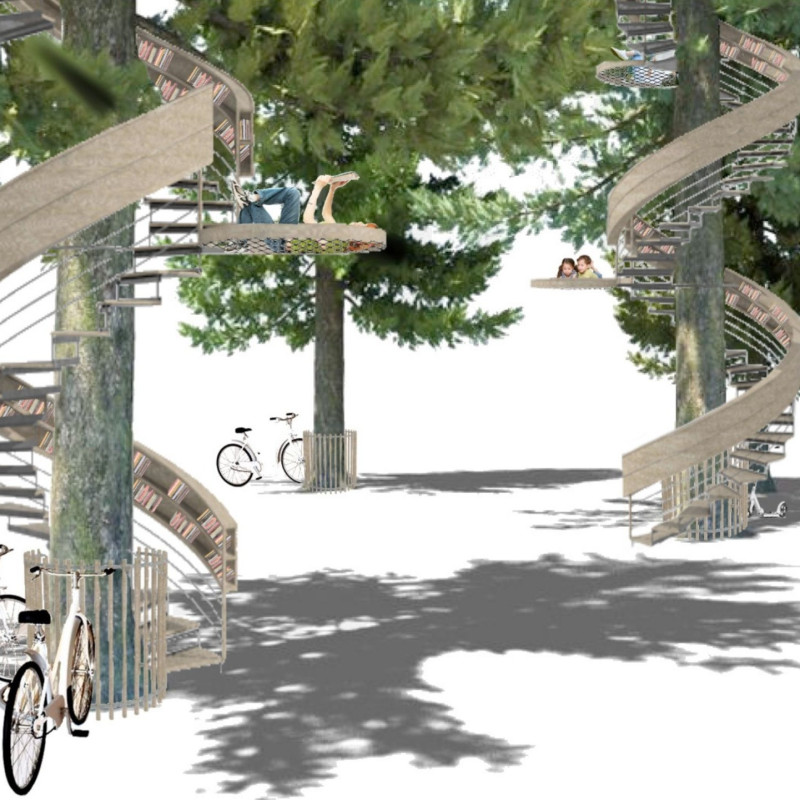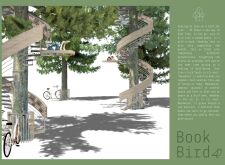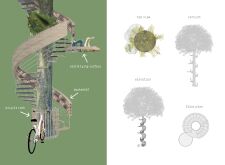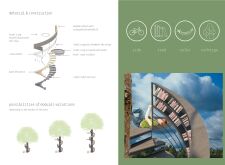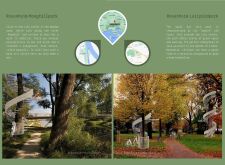5 key facts about this project
### Overview
The project is located within Mangfallpark and Luitpoldpark in Rosenheim, Germany, aiming to create an outdoor reading environment that integrates literature with natural landscapes. By offering this setting, the design facilitates an immersive reading experience, promoting community engagement and interaction with the surrounding greenery.
### Spatial Dynamics and User Engagement
The design features a spiral walkway that winds around existing trees, symbolizing exploration and growth akin to a narrative journey. Integrated seating along the spiral promotes comfort for users, allowing them to relax while reading. Embedded bookshelves enhance accessibility to literature, further enriching the user experience. The incorporation of bicycle racks encourages eco-friendly transportation, emphasizing the project's role in fostering a communal atmosphere.
### Material Selection and Environmental Considerations
The primary materials used include sustainably sourced wood for seating and bookshelves, which provides both aesthetic value and comfort. A steel substructure ensures structural stability while minimizing ecological disruption. Furthermore, the design is adaptable to various tree heights, reflecting an environmentally sensitive approach that effectively combines architectural intent with the existing landscape, achieving a minimal ecological footprint.


